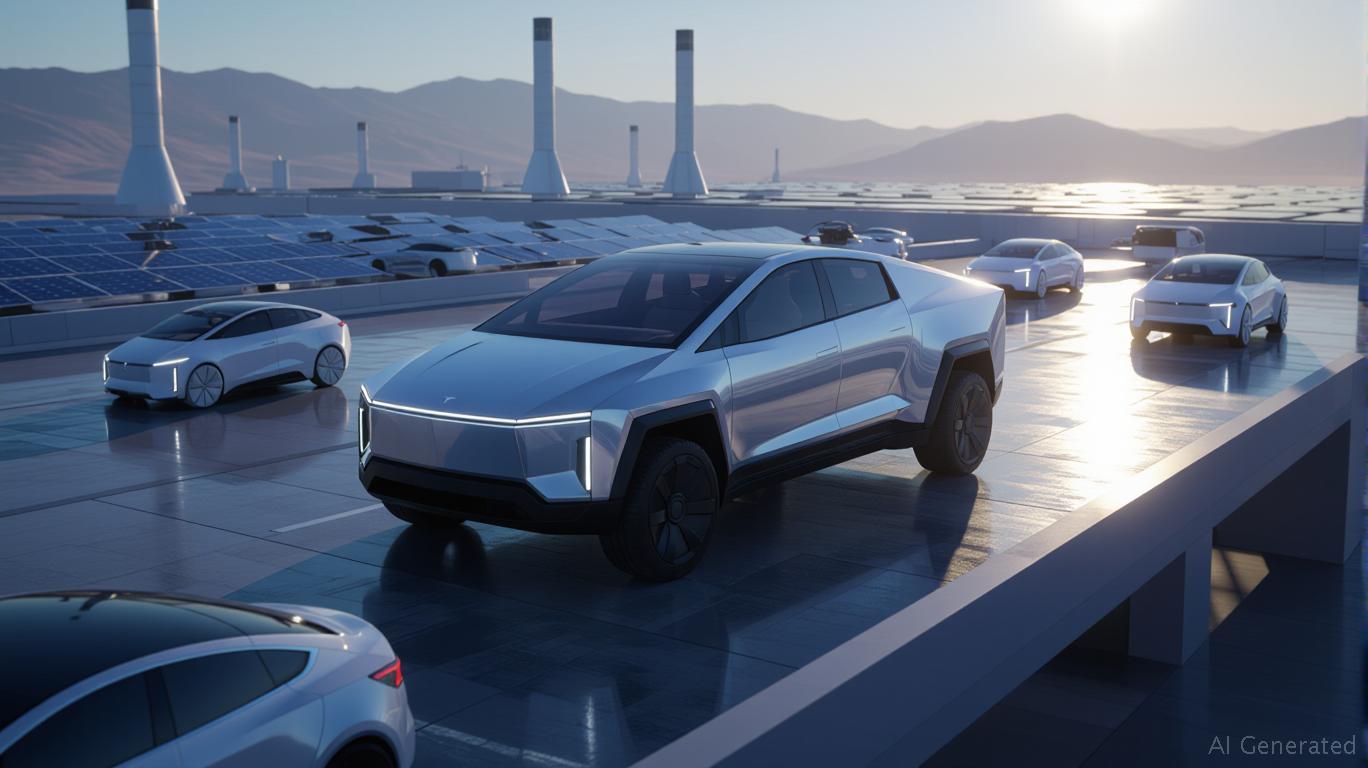The electric vehicle (EV) revolution, once fueled by Tesla’s relentless growth, has hit a turbulent patch. Recent data reveals Tesla’s Q2 2025 deliveries fell to 384,122 units—a 13.5% year-over-year decline—marking its steepest quarterly drop in history. While production rose to 410,244 units, rising inventories and geographic market struggles underscore a critical inflection point for the EV pioneer. This article dissects Tesla’s vulnerabilities amid slowing sales and political headwinds, while weighing its bets on AI-driven innovation as a potential lifeline.

The Sales Slump: A Perfect Storm of Challenges
Tesla’s delivery shortfall stems from a combination of industry-wide EV market saturation, heightened competition, and self-inflicted brand perception issues. The refreshed Model Y, its top seller, failed to meet affordability targets, while the «Other Models» segment (Cybertruck, Model S/X) saw a 52% year-over-year decline due to underwhelming updates. Regionally, China’s sales dropped 18% year-over-year through May, though June shipments showed a modest rebound. Europe’s market share collapsed to 0.9% in May—a 45% drop from 2024—while the U.S. faced a 10.7% EV sales decline in May.
The widening gap between production and deliveries (now 26,122 units in Q2 2025) signals demand concerns. Analysts like Dan Ives note that Tesla’s China recovery and Model Y ramp-up provide hope, but delays in its $25,000 «affordable car» (now pushed beyond 2025 H1) threaten its ability to regain momentum in price-sensitive markets.
Political Risks: Musk’s Spotlight vs. Market Trust
Elon Musk’s high-profile political activities have increasingly overshadowed Tesla’s business. Brand perception surveys now rank Tesla below rivals like Ford and GM in customer satisfaction, with some analysts attributing this to Musk’s polarizing stance. While Tesla’s stock rose 4.5% post-report on relief over outperforming bearish expectations, investors remain wary of how prolonged brand dissonance could deter buyers in competitive markets.
Gene Munster of Loup Ventures emphasizes that Tesla’s long-term value hinges on its autonomy and AI advancements—not Musk’s Twitter feuds—a critical pivot for investors to consider.
The Silver Lining: AI and Autonomy as Growth Catalysts
Amid the gloom, Tesla’s strategic focus on AI-driven innovation offers a path forward. Its 2024 Impact Report highlights plans to scale its Robotaxi service in Austin, deploy AI to boost factory efficiency, and launch Cybercab production in 2026. The Semi truck’s factory ramp-up and a new focus on autonomous driving (Autopilot 12.0) aim to reduce operational costs and differentiate Tesla in a crowded EV landscape.
While Tesla’s stock has underperformed the broader market since 2022, its AI investments—particularly in vision systems and factory robotics—could position it as a leader in the $110B autonomous vehicle market by 2030. The delayed affordable car, when launched, could also reignite growth in emerging markets.
Investment Implications: A High-Risk, High-Reward Gamble
Tesla’s near-term risks are undeniable: execution delays, intensifying competition, and brand dilution from Musk’s activities. However, its AI and autonomy roadmap suggests a $3 trillion market opportunity by 2040. For investors, this is a wait-and-see scenario:
- Hold for the long term: If Tesla can deliver on its AI ambitions and stabilize deliveries post-2025, its valuation could rebound.
- Avoid for now: Near-term volatility due to missed targets, regulatory hurdles, or geopolitical tensions remains high.
Rating: Neutral with upside potential (Hold).
Target Price: $190–$220 by end-2026, assuming successful AI integration and affordable car launch.
Final Analysis
Tesla’s declining sales and political distractions are symptoms of a broader challenge: transitioning from a disruptor to a sustainable tech giant. While its EV crown is slipping, its bets on AI-driven efficiency, autonomous systems, and scalable production models could redefine its future. Investors must weigh near-term execution risks against the company’s vision—a vision that, if realized, could still make Tesla the EV era’s ultimate winner.
Stay tuned to Tesla’s Q3 delivery data, Cybercab updates, and Autopilot 12.0 milestones for clues on its trajectory. The road ahead is bumpy, but the destination might just be worth the ride.








